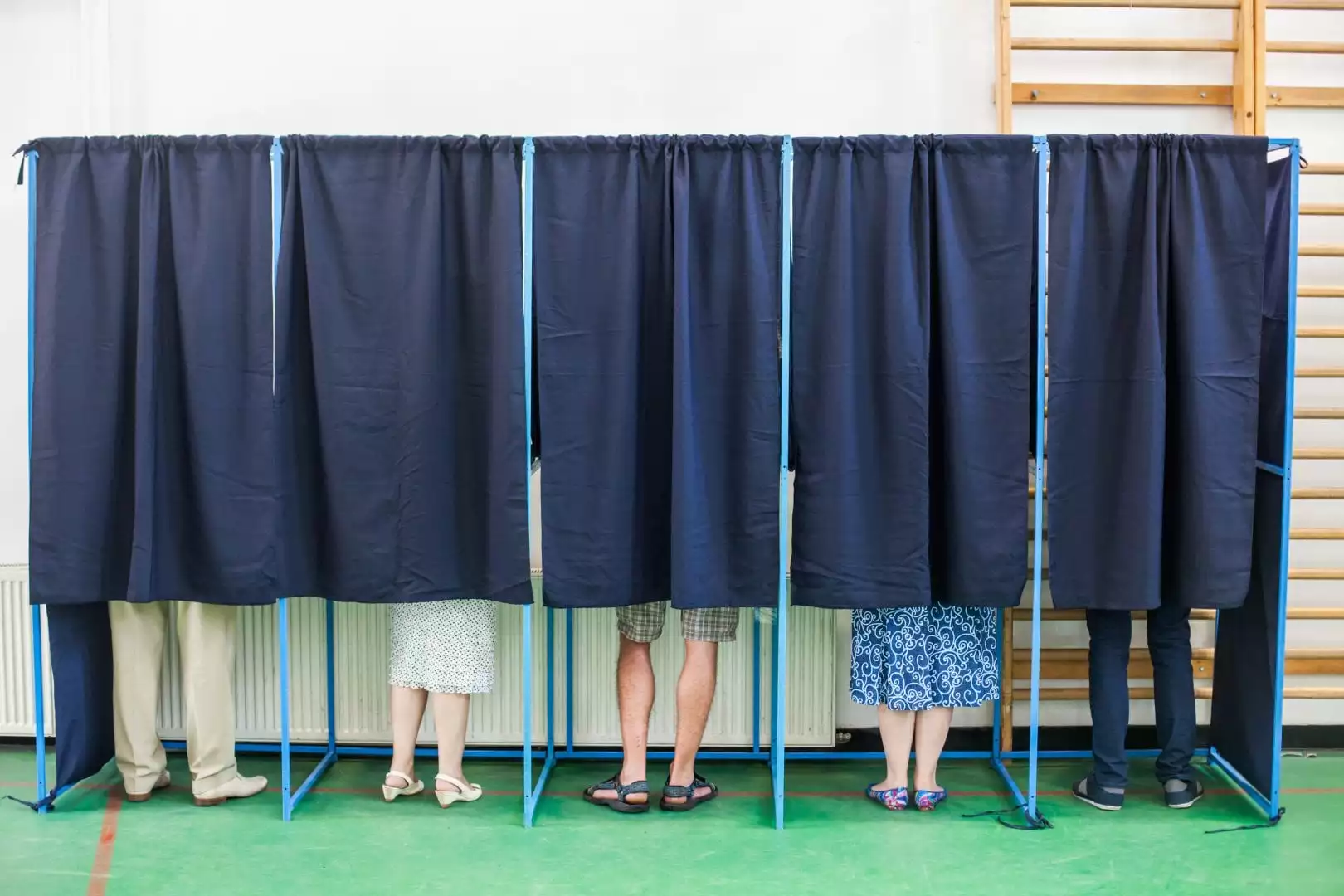Engaging Citizens on City Ballot Measures: A Comprehensive Guide

Rachel Levenstein
Head of Survey Research and PhD in survey science
From General Obligation Bonds to Tax Measures and Beyond
Introduction
Passing a ballot measure is no easy feat, especially when the ballot measure is high stakes or has dollar signs attached, which is often the case with city-proposed measures such as municipal bonds. Yet, these kinds of measures can also be essential for funding the bread-and-butter services of local government. Today, technology is a powerful tool for helping a city understand where its proposed ballot measure stands in the eyes of the voter and to know what information is lacking or needed to better communicate to residents the details of different measures. Through our experience working with many cities, we’ve learned a few things to help you at city hall effectively engage with citizens about your measures and bonds.
Introduction
At Zencity, we have the great privilege of working with hundreds of cities across the United States—from small towns to some of the biggest metropolitan centers in the country. Through our work together, we’ve had the opportunity to support our partner cities through the lifecycles of several local ballot measure votes.
Passing a ballot measure is no easy feat, especially when the ballot measure is high stakes or has dollar signs attached, which is often the case with city-proposed measures such as municipal bonds. Yet, these kinds of measures can also be essential for funding the bread-and-butter services of local government. Today, technology is a powerful tool for helping a city understand where its proposed ballot measure stands in the eyes of the voter and to know what information is lacking or needed to better communicate to residents the details of different measures. Through our experience working with many cities, we’ve learned a few things to help you at city hall effectively engage with citizens about your measures and bonds.
1. Don’t Speak to an Empty Room
If you are trying to engage residents and you find that you are not getting a response, they may very well be expressing themselves loud and clear. A failure to engage residents isn’t necessarily a failure of an engagement strategy or campaign; it may just be that your residents don’t care or don’t connect with what you’re trying to discuss with them. What’s the solution to keep yourself from speaking to an empty room? Understanding what your residents are concerned about and what their pain points are and engaging them on these issues.
To do this, you need to understand what your residents are discussing and what they’re responding to. Understanding this will help you engage effectively because you will know what is important to them, and you will be able to speak the same language. This, in turn, will result in more relevant ballot measures that people will be interested in and a more educated public that will better understand what they’re voting on when they get to the voting booth.
TECHNOLOGY TIP: Technologies like Zencity can help you do this by connecting you to all of the different sources where residents are communicating about the city – aggregating this info and bringing to your attention what residents care about, or alternatively, showing you the gaping silence around what they may not care about. With this knowledge, you can then present relevant information to your citizens and find out what type of ballot measures, or what information for an existing one, would be more significant to the usually silent majority.
2. Diversify your Data Sources
Preaching an empty room is one pitfall, but another pitfall is preaching to the choir or engaging the already engaged. Relying on a small data sample like one survey or the group of interested stakeholders who showed up to a city council meeting to understand if you’re effectively engaging with residents can be a major mistake, especially when it comes to high-stakes projects. It will not provide the big picture as to whether or not a ballot measure is being supported. Though a small but loud constituency in favor or opposition to a project, bond, or tax measure can provide great feedback, you still need to remember that there’s a whole community that will come to the ballot and will need to vote, and they may not feel the same because they may not be as knowledgeable and invested in the measure.
The best way to prevent this is to make sure you’re connected to as many different data sources as possible. Don’t rely on just one survey—check out what your residents think in informal social media channels (such as community Facebook pages), through different kinds of community events, and even in sources like the local newspaper and its online comments sections.
TECHNOLOGY TIP: Gathering and comparing all this data can be overwhelming, but technology can help make this easy. In Zencity’s case, we aggregate data from hundreds of sources into one dashboard and provide an overview of the volume and the sentiment of conversations in your city so you can see how much dialogue there is about a specific topic and whether the discourse is positive or negative at a glance.
We won’t go naming names, but we’ve seen the unfortunate outcome of not diversifying and not communicating properly with voters firsthand. A city in California that we work with had positive responses to a single survey they issued gauging support for a tax measure. The surveys said that residents were in favor of the measure. Certain that the measure would pass with flying colors, they ignored what the rest of the data had to say. Zencity ran a project on the same measure, showing that, in fact, the majority of the community did not support the measure, and the survey, although perhaps statistically significant, didn’t seem to be representative. Guess what happened on voting day? You guessed it, the tax measure failed because the city did not use multiple data sources, and they did not engage properly with more of their residents.
3. Social Media is Your Friend
The bottom line of citizen engagement around a ballot measure is that it’s easier to communicate with your voters before they’re standing in the ballot box, where all too often they are thinking about an initiative for the first time, even if the city has put months into preparing the measure. The best way to directly engage with citizens is also the scariest, and that is with social media. Considering that most Americans today are frequent social media users, it makes sense that this will have the widest reach when communicating with your residents. When presenting information about a ballot measure, we recommend starting early so you can lead the discussion before the measure’s opponents frame it for you. This allows you to bring city hall directly to the people, making it easy for citizens to bring city hall to their friends, too, and pass along the information, resulting in a wider net of people who will be informed and potentially engage back with you.
Social media is an easy way to reach diverse audiences, spark conversation, understand what different members of your community think, and educate residents. It can be a great informal tool for sharing information, and more than that, it’s very easy for residents to respond to you, engage with you, and even share what you’re sharing with their own communities.
In Hooksett, New Hampshire, the Chief of Police did a phenomenal job using Twitter to engage the town about a proposed ballot measure funding renovations of the town’s Safety Center. Guess what, it was one of the few funding measures successfully passed by the town.

4. Be Flexible
When you begin engaging, remember to listen. As your community engages, they will surface pain points – sometimes the ones you are already trying to address, sometimes new ones. Engaging isn’t just about sharing information, it’s about having a two-way conversation and it may serve a city well to be flexible and process residents’ responses to proposed measures. If one message isn’t working, leads to misinformation, or is receiving pushback, being flexible could be finding different ways to share the same information to residents. But it also could mean being prepared to alter what was proposed on the ballot. For example, residents may happily support general obligation bond funding for four of your proposed projects. The difference may be taking that fifth project off the ballot. However, having a nuanced understanding that residents aren’t resisting the entire bond but one specific project isn’t easy. It requires getting residents to discuss your initiatives, and then you must be able to listen to them and respond accordingly.
Once you’ve engaged your community, be prepared to govern proactively. Address concerns and, if necessary, change a draft proposed measure—a small change could be the difference between the passing or failing of a measure that can help the community.
5. The Numbers Don’t Lie
Finally, anecdotal data is great, and storytelling is an important part of policymaking. Communicating with residents through technology and in person is invaluable as part of community engagement. Every tool, digital and otherwise, has a role, and each community member has an important personal experience to share. However, when push comes to shove, data in support or opposition to a proposed ballot measure will be relevant when it’s quantifiable, so to engage effectively, find a way to quantify your engagement. At the end of the day, votes are counted, and not individual stories or experiences – quantifying your engagement can give you insight into the future outcome of a vote. So, find a way to be data-driven about your work.
TECHNOLOGY TIP: At Zencity, the core of our work is helping cities become more data-driven. Our platform takes highly qualitative data – literally discourse and feedback – and converts it into something quantitative – measured in volumes of conversations and sentiment broken down by percentages. A proposed ballot measure should be based on the pain points city leaders are familiar with from their own deep knowledge of the city, the community, and interactions with residents. But for that measure to potentially pass, find a data-driven way to check your entire community’s support or opposition before they enter the ballot box by engaging broadly and quantifying that engagement. Of course, we think Zencity is a great tool for this, but whatever tool you use to engage and gather feedback, sentiment, and knowledge, aim to be numbers-oriented when testing the relevance of an important tax measure, bond, or any other initiative.
Conclusion
We know that engaging residents on ballot measures and G.O. bonds can often be a daunting task for our cities. We’ve helped many cities through this process to understand and reach out to their communities, and we are happy to share what we’ve learned. By following these steps, your city will get a better picture of what proposed bonds and ballot measures are important to residents, and you will also improve communication with your residents in the process.
%20copy-1.png?width=544&height=120&name=Logo_black%20(1)%20copy-1.png)




